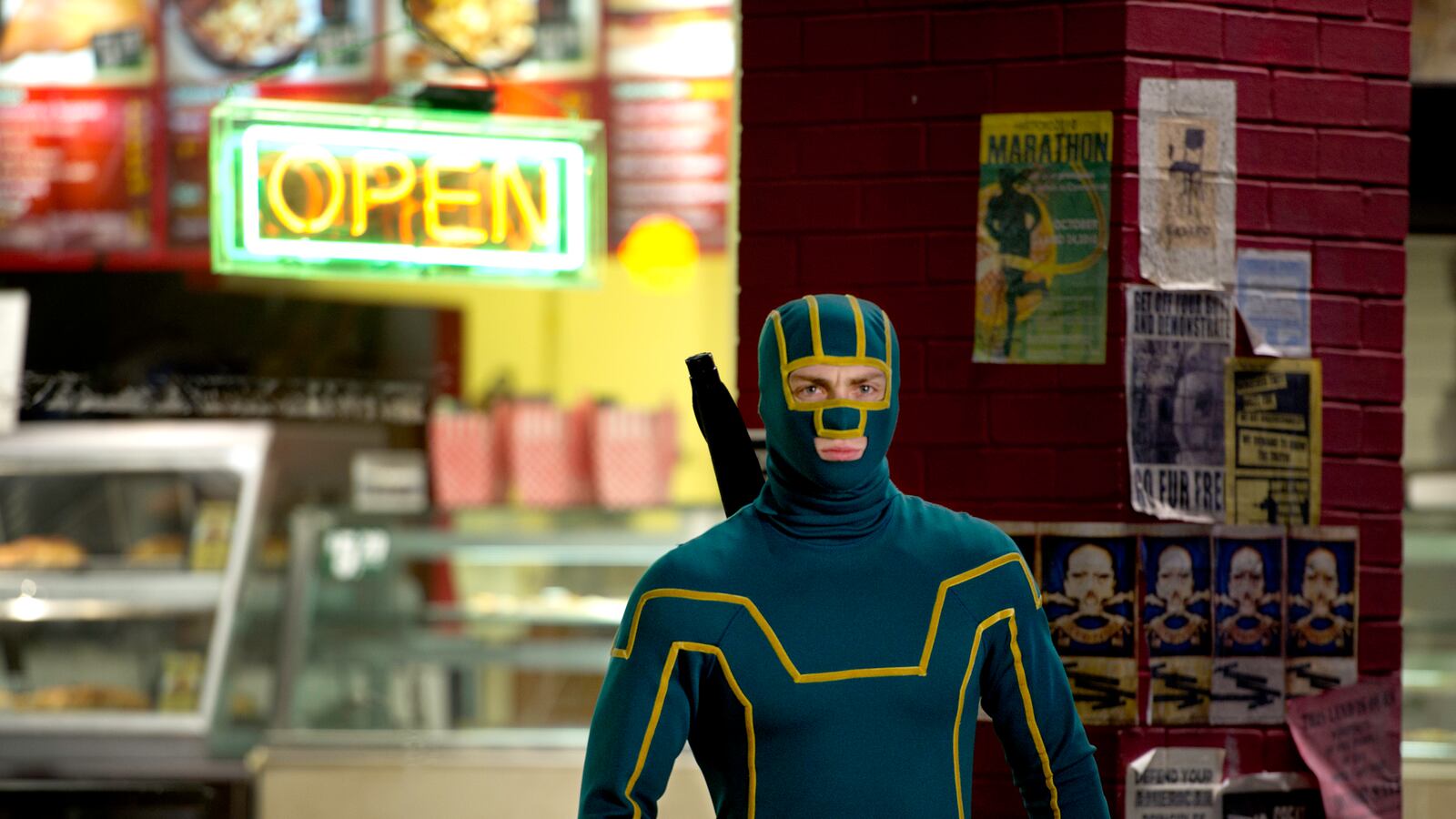The hyperstylized fanboy dream Kick-Ass is back. Before it released, it had already pissed some people off. Jim Carrey, who plays the vigilante Stars and Stripes in Kick-Ass 2, refused to promote the film in the wake of the Sandy Hook shooting, criticizing its excessive violence. Instead of turning people away from the film, Carrey’s campaign backfired. It’s estimated that the amount of publicity that the actor generated for the movie was worth $30 million.

The source material was violent. Very violent. If you can believe, a lot of the gore didn’t make it into the movie. While the comic-book violence highlighted the message that Kick-Ass was trying to make as a story, the film’s brutal action has another purpose.
The first book and film aren’t that different until the last act. In both, Big Daddy is a former cop who, along with his daughter Hit-Girl, trains to become a superhero so they can take down the mob boss responsible for his wife’s death. At the end of the comic book, it’s revealed that Big Daddy is not actually some great hero, but a regular comic-book nerd exactly like Kick-Ass. He was never a police officer, but an accountant who was so bored with his ho-hum life that he kidnapped his infant daughter and concocted an elaborate backstory.
He bankrolls this expensive fantasy by selling his rare comic books. It’s a message specifically for comic-book fans: escapism is great, but don’t take it too far. This carries into the second book when Hit Girl can’t readjust to normal life as a child. She’s said to have a severe personality disorder. Another shot is taken when the villain causes a distraction by bombing every comic-book store in the city. The violence in the comic here is extreme and brutal—it shows readers that superheroes are not possible in the real world and shouldn’t be something to aspire to.
The movies have a completely different message: being true to yourself is what’s important and wanting to help others is heroic and admirable. The film is stripped of some of the dark plot turns, leaving Big Daddy as a straight crusader that everyone reveres. Hit-Girl, meanwhile, fails to fit in to society because she’s just a hero at heart. It’s a simpler, less harsh lesson. Consequently, the violence exists just for the sake of violence. It doesn’t really advance any kind of theme. It’s just gratuitous.
For those of you who haven’t read the comic books, here’s a secret: Kick-Ass is a trilogy. The first issues of the third volume are just being released along with a miniseries on Hit-Girl, so it’s more than likely we’ll be seeing another one of these. The second book ends with Kick-Ass having just pushed The Mother Fucker off of a building after losing everything and escaping. Hit-Girl creates a distraction, is caught, and is thrown in jail. The movie ends with The Mother Fucker accidentally falling and Hit-Girl riding off on her bike.
For all the changes, the movies aren’t bad. They just happen to be simpler because they need to appeal to a wider audience. If you enjoyed the first, you’ll enjoy the second—if you’ve got a strong stomach for gratuitous violence.






